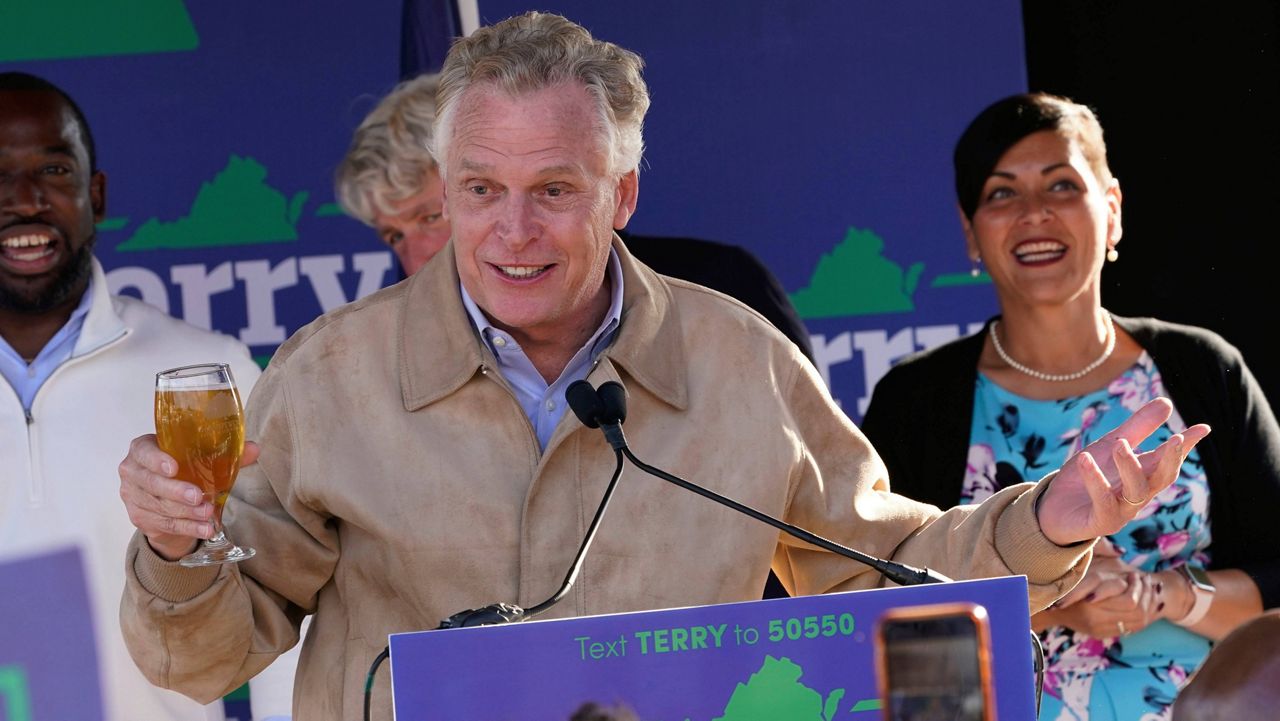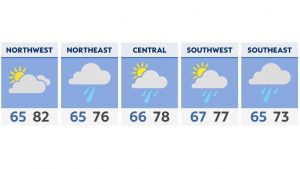CINCINNATI — The race to be Cincinnati’s next mayor is the most prominent item on the November 2021 ballot. But there are several other significant races and issues that will affect day-to-day life in Cincinnati over the next few years.
Other races include seats on the Cincinnati School Board and a judge position in Hamilton County Municipal Court. There are also three separate issues on the ballot, including two tax levies and a charter amendment.
Here’s a look at all the Cincinnati races and measures voters decide on this Election Day. You can find additional information about polling locations, the ballot and other races on the Spectrum News politics page and the Spectrum News app, which includes a personalized voter guide.
The next mayor of Cincinnati
City Council member David Mann and Hamilton County Clerk of Courts Aftab Pureval are running head-to-head to become the next mayor of Cincinnati.
The election comes at a pivotal moment in the city’s history and a time of great transition at City Hall.
On Tuesday, voters choose which one will run the city for the next four years. The winner replaces incumbent John Cranley, who is term-limited after serving the last eight years as mayor.
As in other other cities, Cincinnati continues to work to recover from the social and economic impacts of COVID-19. But the city faces other issues as well — gun violence, development, jobs, affordable housing. Both candidates have voiced a need to clean up perceived corruption on Plum Street and reestablish public trust.
Like Cranley, both Mann and Pureval are Democrats. They even live in the same neighborhood as each other — Clifton. Despite sharing a political party, each candidate has their own view on the key local issues shaped by their personal backgrounds.
There can be only nine
There are a near-record 35 people on the ballot for Cincinnati City Council this election cycle. They represent about 20 of the Queen City’s 52 neighborhoods and come from a variety of personal and professional backgrounds.
Among them is only one elected member of City Council — Greg Landsman (D). He won election to council in 2017.
Four other members of council are also on the ballot, but none of them won their seat by way of an election. Each received an appointment to their position, either by a council designee or a judge, after an elected official resigned, or agreed to a suspension.
That includes Betsy Sundermann (R) and Jan-Michele Lemon Kearney (D), who were appointed to their seats last year. A conservative-leaning judge named Steve Goodin and Liz Keating, both Republicans, are interim council members.
Three of those four (Lemon Kearney, Goodin and Keating) made their way to the dais by way of criminal charges against their predecessor. Sundermann was appointed to her seat after Amy Murray (R) stepped down to take a job in the Trump administration.
A few of the other names on that ballot have run in various political races throughout the years. But most are known from their careers in other fields — teachers, lawyers, retired police officers and community activists. Some are parents, while others aren’t.
Candidates are now running for two-year terms, instead of the short-lived four-year terms. Voters made that decision back in 2018.
Cincinnati is an at-large system. That means eligible voters among the city’s 300,000-person population will each get to select their favorite candidate or candidates, regardless of where in the city they live. A voter can select up to nine candidates but they can also stop at one or two (or more), if they want.
Ballots in Cincinnati are nonpartisan, meaning they do not list a candidate’s political affiliation. That rule stems from the city’s charter.
Issue 3: Will voters change the city charter?
Cincinnati voters will have a choice to vote on a series of measures rolled into one proposed charter amendment.
Dubbed “anti-corruption measures,” the eight items would change Cincinnati’s charter if passed. They were created in light of what’s been viewed as a corrupt era at City Hall, including the arrest of the three City Council members.
In recent years, questions have also been raised about things such as how city-elected officials work with developers and the transparency of public meetings. In 2018, a group of five City Council members, dubbed the “Gang of Five,” were accused of conducting city business via private text messages.
State Rep. Tom Brinkman (R), who is also running for City Council, is the chief sponsor of Issue 3.
The measures are:
-
Requiring City Council approval of all lawsuits filed by the city
-
Making council members’ salaries equal to the median household income for the city. The move would cut council member salaries
-
Requiring a mayoral or council member candidate to live in the city for at least one year prior to running or serving in one of those positions
-
Eliminating with the designee replacement system. Under this system, a council member designates one or more sitting council members to select their replacement if they have to resign or step down
-
Establishing a system where a council member who resigns or has to leave office would be replaced by the 10th-place finisher (or the person who received the next highest vote total) in the last City Council election. This would replace the current “designee” system
-
Eliminating the mayor’s discretion to refuse to place an item on the council agenda or assign it to a committee. This is sometimes called the “mayor’s pocket veto”
-
Allowing individual liability of city employees for some violations of open meetings and public records
-
Creating a method for recalling the mayor
A voter can’t pick-and-choose which measures you support or don’t support. A “yes” is a vote for all eight measures, while a “no” rejects all them.
Cincinnati School Board
There are six people running for four seats on the Cincinnati Public Schools Board of Education.
The board is the governing body of the Cincinnati Public Schools district. It handles things such as CPS’ annual budget and oversees the district’s growth and sets the framework for student development.
Recently, the CPS board has been in the headlines for their response to COVID-19, including being an early advocate for universal masking and establishing a vaccination policy for staff. They’ve also been vocal about their dispute with the Southwest Regional Transit Authority over student busing options.
CPS is also in the process of searching for its next permanent superintendent.
Incumbents Pamela Bowers and Mike Moroski are running for re-election. The challengers are Mary Wineberg, Brandin Craig, Gary Favors and Kareem T. Moffett.
Board Vice President Ryan Messer and Board member Melanie Bates decided not to run for another term. Board President Carolyn Jones and members Eve Bolton and Ben Lindy’s terms don’t expire until Dec. 31, 2024.
Each member of the seven-member board serves a four-year term.
Judge – Hamilton County Municipal Court (District 2)
There are three people running to fill an unexpired term as judge for Hamilton County Municipal Court (District 2). The term will end Jan. 2, 2024.
Judge-designate Bertha Garcia Helmick received an appointment to the position by Gov. Mike DeWine last April after Judge Alan C. Triggs took over on the court of Hamilton County Court of Common Pleas.
Garcia Helmick became the first woman of Hispanic descent to serve as magistrate of the Hamilton County Probate Court, per Court News Ohio.
The other competitors include Donte Johnson who was endorsed by the Hamilton County Democratic Party, and Elizabeth A. Tye.
Tax levies
There are two tax levies on this year’s ballot.
Issue 1 is a children’s services levy. It calls for the renewal of a 2.77 mills and an increase of 1.74 mills to constitute.
Continuing the levy for five years would generate about $80 million a year that would go to the operations of Hamilton County Job and Family Services, according to the authors.
If passed, homeowners would continue to pay about 45 cents per $100 of home value.
If it fails, Hamilton County would either need to find another funding source to cover the $80 million the levy generates or likely modify services.
Issue 29 is a proposed 10-year levy that would benefit Great Parks of Hamilton County. Funds collected would support infrastructure and improvements for the parks system. That includes everything from building renovations and playground upgrades to adding more park trails.
Great Parks manages 21 parks and nature preserves spanning 17,700 acres across Hamilton County. The levy would fund approximately 76% of the $101 million in what the parks called “critical infrastructure needs” and approximately 56% of the $124 million in park improvements identified through its master plan.
If approved, the levy is estimated to cost Hamilton County homeowners roughly an extra $33.25 per year for every $100,000 in residential property value. That would be on top of the current Great Parks levy, which currently costs homeowners $30 per $100,000 of property value.




